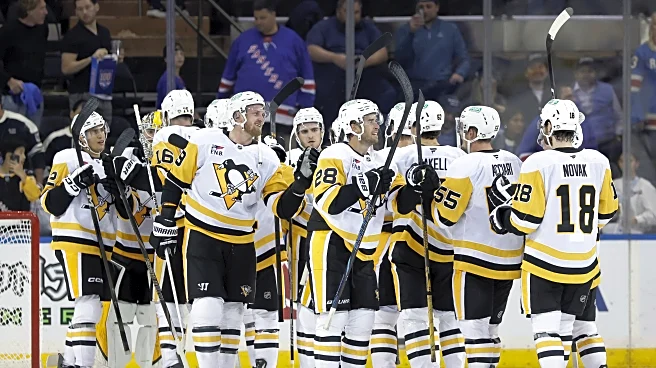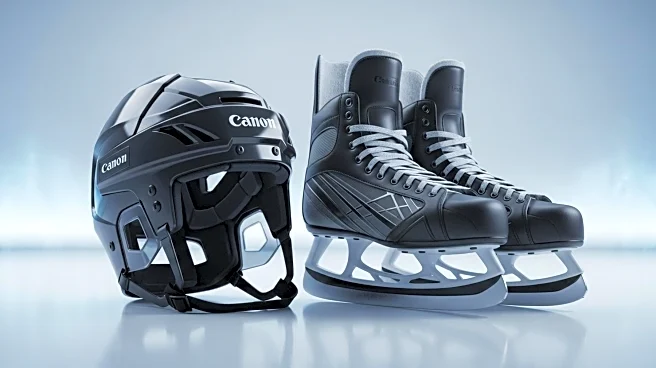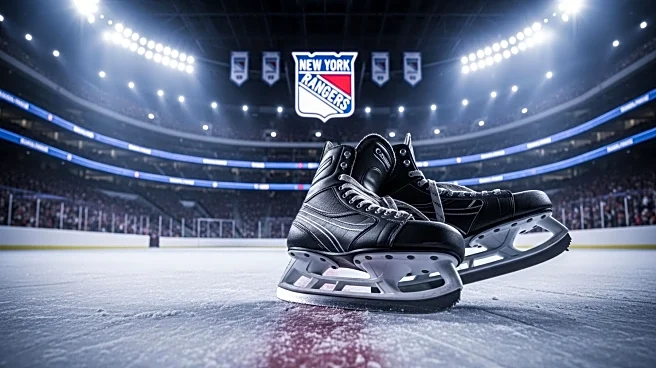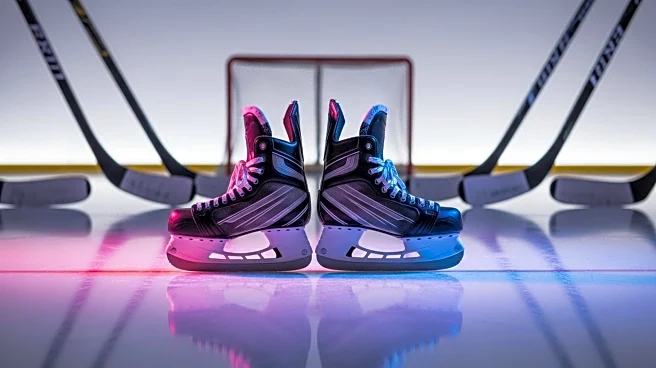What's Happening?
The NCAA has opened its doors to Canadian Hockey League (CHL) players, marking a significant shift in college hockey dynamics for the 2025-26 season. This decision has led to an influx of high-caliber players, enhancing the level of play across the league. Among the notable players making the transition is Gavin McKenna, a freshman forward at Penn State University, who is projected to be the No. 1 pick in the 2026 NHL Draft. McKenna previously excelled in the Western Hockey League, finishing second with 129 points and earning player of the year honors. Coaches like Nate Leaman of Providence College and Rand Pecknold of Quinnipiac have praised the improved quality of NCAA hockey, noting the presence of 18 first-round NHL draft picks this season. This development is expected to further solidify NCAA hockey as a prime environment for young prospects to hone their skills before entering the professional arena.
Why It's Important?
The inclusion of CHL players in NCAA hockey is poised to elevate the competitive standard and visibility of college hockey in the U.S. This move not only enhances the talent pool but also positions NCAA hockey as a more attractive option for young athletes aiming for professional careers. The presence of high-profile players like Gavin McKenna can draw increased attention from scouts and fans, potentially leading to greater investment and sponsorship opportunities for college programs. Additionally, this shift may influence the career paths of young hockey players, who might now consider NCAA hockey as a viable stepping stone to the NHL, thereby altering traditional recruitment patterns and development strategies within the sport.
What's Next?
As the season progresses, the impact of CHL players in NCAA hockey will be closely monitored by coaches, scouts, and analysts. The performance of these players could lead to further adjustments in recruitment strategies and eligibility rules. Colleges may seek to capitalize on this trend by enhancing their training facilities and support systems to attract top-tier talent. Additionally, the success of players like Gavin McKenna could prompt discussions about expanding eligibility criteria to include more international players, further diversifying the talent pool. Stakeholders will likely evaluate the long-term implications of this decision on the development of hockey talent in North America.
Beyond the Headlines
The integration of CHL players into NCAA hockey raises questions about the balance between amateur and professional development in sports. This shift could spark debates on the ethical considerations of college athletics, particularly regarding the commercialization of college sports and the potential exploitation of young athletes. Furthermore, the move may influence cultural perceptions of college hockey, positioning it as a more prestigious and competitive arena akin to other major college sports. The long-term effects on player development, recruitment practices, and the overall landscape of hockey in North America will be areas of interest for sports historians and analysts.











